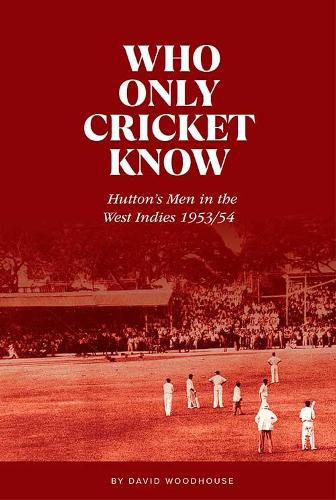By David Woodhouse, Fairfield, 448pp, £22, ISBN 9781909811591

What are the greatest books on cricket? Lovers of the game have long enjoyed debating this topic with one or two pretentious tomes and a few with suspect scholarship wriggling into the discussion. Now we have another contender. This book by David Woodhouse will surely make the shortlists for a host of annual awards. It will deserve to do so on literary merit, supported by rigorous research and a balanced quest for the truth about a tour that perhaps surpasses Bodyline for the contention and ill- feeling it provoked.
The length of the book reflects the author’s relentless pursuit of all the twists and turns of a story that unfolds against a political background of sometimes bewildering complexity. ‘The imperial mindset and the amateur ethos were dancing one of their last duets.’ The duet may have varied in each of the four territories from which West Indies teams were then chosen – Jamaica, Barbados, Trinidad and British Guiana – with the variety and hierarchy of skin colours just one differentiating feature. All were fighting their way to freedom from colonial rule, yet any commonality of feelings was subsumed by inter-island jealousy whereby Test selectors risked the wrath of local communities if a place could not be found for one of their favourites. The appointment of umpires, too, was the preserve of each territory. Standards were at best variable with bias and incompetence hard to disentangle, while MCC’s protest at the pair originally chosen for the Georgetown Test saw the groundsman who had prepared the pitch prevailed upon to take the umpire’s coat as well.
The days of white rule were already numbered, but those accustomed to unchallenged privilege were not going to surrender without a fight – and Hutton’s team were expected to play their part in keeping the blacks in their place. Was it appropriate for MCC to have sent a professional to lead the side on such a diplomatically challenging mission? To many of the ex-pat community it was an insult. Was it sensible to have appointed a young manager, Charles Palmer, who had no experience of the area he was visiting? Was it responsible to have sent him off without a proper briefing on the nuances of the political situations that would soon confront him? Was it prudent to have allowed budgetary considerations to make his role that of a player-manager sometimes subordinate to the captain?
Woodhouse has allowed time to pass before re-visiting the rumpus and addressing some of these questions. Few of the on-field participants were still around to help him, but Alan Moss, last of the English contingent, was able to offer some pithy observations, while a valuable Caribbean perspective comes from the late Everton Weekes and Bruce Pairaudeau. Interviews apart, the author’s primary sources are the MCC archives and contemporary newspaper reports, both English and local, with allowance made for the known stance of the various correspondents. To these sources may be added the many books touching on the tour, the lives of thirteen members of the MCC party generating no fewer than 62 titles in the bibliography and the leading West Indians not short of opinions committed to print. Just two books with contrasting perspectives were devoted wholly to the tour: Alex Bannister, close to the captain and players, wrote with greater sympathy for Hutton and his men, while EW Swanton, more concerned to make his mark at Government House, was quicker to castigate the tourists for any lapse in deferential good manners.
The supporting cast was nicely chosen to hold the reader’s interest: Evans and Compton out to have a good time; Trueman and Lock, youthful and boorish, paired together and ‘deserving each other’; Wardle, a poor team-player, embittered by Hutton’s preference for Lock; the cussed Bailey, a professional in amateur’s clothing, yielding to no man. Differences of region, age and attitude were carried onto the field with Hutton, risk-averse to a fault, initially stifling the natural instincts of his middle-order stroke-makers.
The ebb and flow of the matches is clinically reconstructed in sometimes excessive detail as are the on-field incidents, the Bourda riot and the indiscretions off the field, where readers are left better informed to draw their own conclusions. Improbably, but in the best traditions of a romantic novel, the supine early defeats seem a distant memory as the tour ends in triumph with the captain’s double-century steering the tourists against all the odds to victory and a shared series. Yet even his finest hour was marred for poor Hutton as he failed to identify the Jamaican prime minister among the throng of well-wishers. An oversight, perhaps, or the crowning insult? It depends what you want to believe.
A fine book provides all the essential statistics, carries a well-chosen selection of photographs and provides an index with details for which future researchers will be grateful.
Douglas Miller (The Cricket Statistician, Spring 2022)
